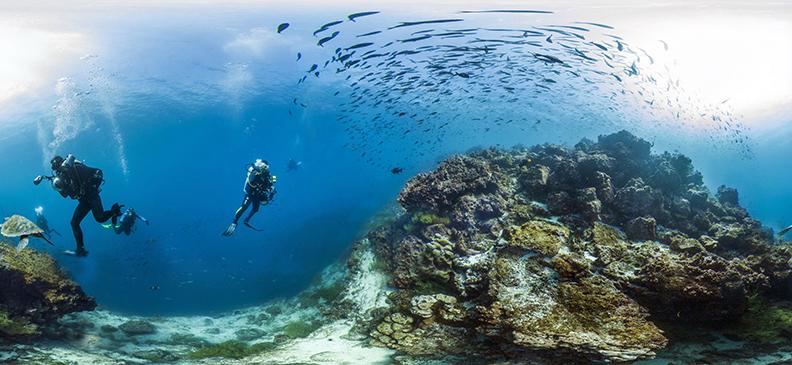Helping a Great Reef at Risk
Holiday Issue
December 19, 2016
The Great Barrier Reef is not dead. However, the stark white of the dying corals says it all: the reef needs help—and it needs it now. A major environmental catastrophe overwhelms the 1,400-mile network of reefs located off of the coast of Queensland, Australia, according to The Guardian. The ARC Center of Excellence for Coral Reef Studies concludes that the mass bleaching event damaged 93% of the coral reefs, thus contributing to the death of more than 20% of the reef overall. Despite claims that global warming is a nonexistent threat, this ecosystem serves as a clear example of the devastation that lies in the wake of climate change.
According to Jonathan Pearlman, coral bleaching is a result of a prolonged increase in oceanic temperature. Corals expel symbiotic algae from their tissues which culminates in a blanched skeleton. The recovery process requires stable conditions, which ultimately proves difficult with the long-term warming and acidification of the oceans. Suffering from environemtal effects are the flora and fauna of these ecosystems, such as coral, tropical fish, birds, and reptiles that inhabit the regions. Divers assessing the coral damage reported a stench emanating from the lifeless bodies of millions of animals, as stated by The Guardian.
Biology teacher Caitlin Norton provided some insight on the issue: “Coral reefs are aquatic ecosystems that support an incredible amount of biodiversity. They are similar to tropical rain forests in that they provide habitat for so many different species. They have suffered due to climate change in a few ways. Warmer water temperatures can bleach corals and increased concentrations of CO2 in the atmosphere can dissolve in the ocean and result in ocean acidification. The pH of the ocean water decreases and causes the calcium carbonate shells of aquatic organisms to break down.” Therefore, the deteriorating reef is at risk of losing its once abundant sources of life and vivid beauty.
According to the World Wildlife Fund for Nature, overfishing and global warming are the main contributors to the declining health of the reef. Additionally, coral bleaching, the burning of fossil fuels, and intake of animal products hinder its ability to recover. In an effort to combat coral bleaching and reverse the reef’s path to extinction, it is encouraged to maintain habits that aid in counteracting the negative effects of global warming, such as powering homes with renewable energy, using energy-efficient appliances, and reducing operation of vehicles.
Norton agrees that change is necessary for the survival of the reef: “One of the biggest things that people can do to help protect aquatic ecosystems like the Great Barrier Reef is to support the reduction of carbon pollution. This means working to transition from using fossil fuels to using renewable forms of energy.” By altering bad habits, people everywhere have the opportunity to save the Great Barrier Reef and the 850 million people dependent on it for sustenance, as reported by Think Progress.
Additionally, Maddie Malone ’18 emphasized awareness as the key reform in Barrier Reef preservation: “I believe that if people become more aware of the situation our earth is in, then there are more possibilities for positive change [for the Barrier Reef].”
The fate of the Great Barrier Reef, the largest living entity in the world, is ultimately in the hands of the people. In order to alter the reef’s path, one must alter his or her own.































